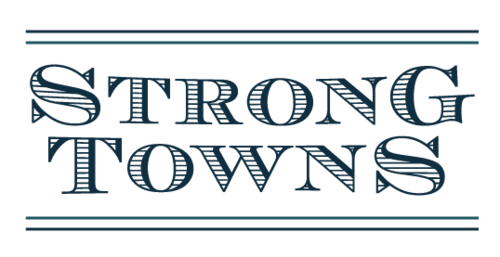Is it possible that we are building things completely incorrectly? // By Jacob Goff, editor

“Humans used trial-and-error experimentation for thousands of years to refine humanity’s approach to building its habitat. By the time history reaches the apex of ancient cities Americans are familiar with, places such as Athens or Rome, those experiments had been tested during times of abundance and scarcity, peace and war, disease, pestilence, stagnation, and growth. The result was a pattern of development that was adaptable, productive, and strong.
This same pattern can be seen in the pre-1900s cities of North America. While the architecture changes with geography and time, the essential layout is the same. A person living in a frontier town in the early 1900s, or Manhattan of the same period, could have bought a meal, earned a paycheck, and found a place to sleep, all within a reasonable walk. In other words, these neighborhoods would have been familiar to our ancient city-dwelling ancestors.
That same insight is no longer true. The way we now build cities in North America would be unrecognizable to an American who lived even a century ago. It would be difficult for them to comprehend a highway, a parking lot, a shopping mall, or a middle class family in a single-family home with a three-car garage. They would be lost in the world of big box stores, office parks, and cul-de-sacs.
Get beyond whether the changes have been positive or not; there is one important aspect of this shift that is critical to acknowledge: It was abrupt. Humans had been living one way for thousands of years, yet within just a couple of decades, Americans transformed an entire continent around a new set of ideas.”
// Charles L. Marohn, Jr. in Strong Towns
When we apply this thinking to our own cities in St. Francois County — what do we see?
Cars have been the primary focus of city development for a long time. Riding a bike on highway H does not exactly feel safe. Even going by bike from apartment buildings that are located in the city — I’m not talking about biking to farms — like Hilltop or Icon is insanely dicey.
Do you think if we had nice wide bicycle lanes going up and down our highways, the mennonities (or whoever feels like riding a horse) could also have a much safer travel opportunity throughout the county?
I’m not discussing specific points of entry, I’m just saying that if you zoom out and look at the overall development pattern, we haven’t been moving towards or refining a city grid that could withstand hundreds of years of social ups and downs in an efficient and egalitarian manner. We build big metal warehouses that will barely be standing in 25 years. We don’t have a great history of saving gorgeous buildings in our time. If you look at our downtown here in Farmington, something happened in the 70s, 80s and 90s that cleared out a good amount of the brick buildings. We still have some, but if you looked at pictures from before that time, you don’t see sprawling parking lots all through our dense little downtown.
The one-way streets create a more complicated grid than our town should have. Out-of-towners have no clue how to navigate these dumbass downtown Farmington streets. If you sit downtown in a single afternoon you will see 3-5 incidents where a car is travelling the wrong way. I don’t know how you fix this problem other than to not make such horrific and short-sighted design decisions in the future (apparently Farmington streets went to one way to dissuade “cruising” back in the 70s, where high school kids would go back and forth down the main streets and flirt or start fights with other cars).
City design has a lot to do with quality of life and economic opportunity. We need to do more to spur the conversation about building a shared landscape that provides many options to get around. We want to insire folks to create dense buroughs and neighborhoods where families can connect with other families. We are taking a really long view on this project, and allowing our discussion to be idealistic and future oriented. No idea is too crazy to imagine if that idea could create a better quality of life for county residents. 🏹
